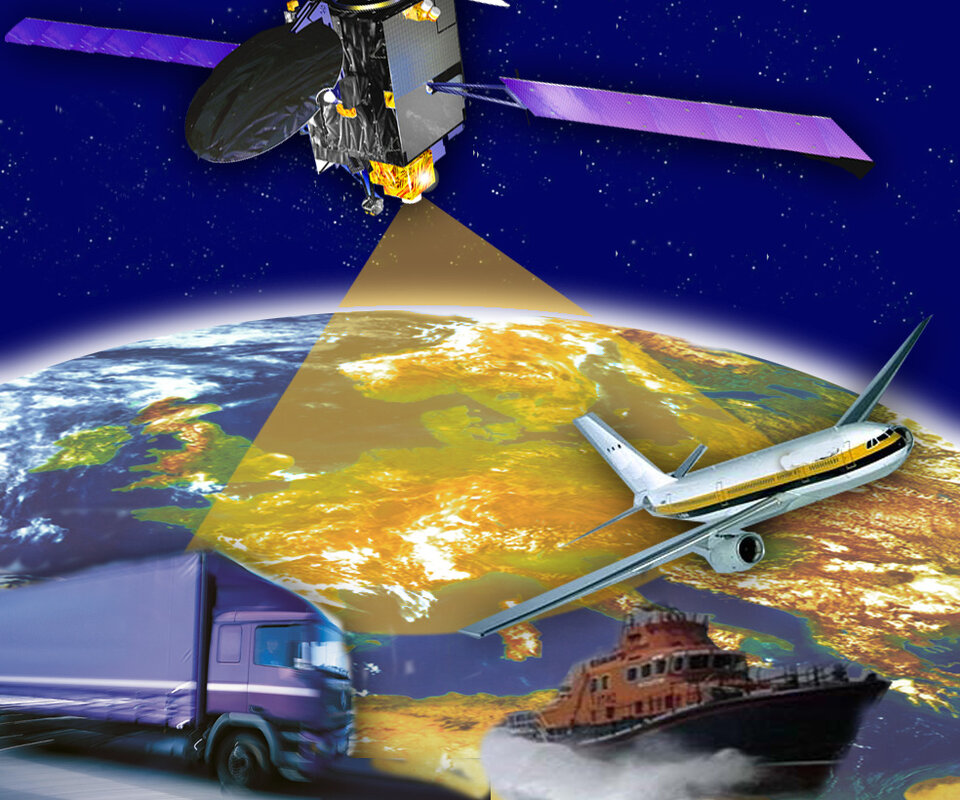ESA guides global satnav augmentation gathering
Programme managers and technical experts overseeing four of the world’s regional satellite navigation augmentation systems met this week, with ESA coordinating the participation of stakeholders in Europe’s own EGNOS system.
The Satellite-Based Augmentation Systems (SBAS) Interoperability Working Group (IWG) was hosted by the German Aerospace Center, DLR, at Oberpfaffenhofen near Munich in southern Germany, on 17–18 January. Russia’s Roscosmos space agency attended for the first time.
There’s satellite navigation and then there’s satellite augmentation – where additional ground monitoring stations and satellite transponders are used to sharpen satnav accuracy and reliability across geographical regions.
The improvement makes satnav suitable for the vertical guidance of aircraft and a range of other precision applications.

Today there are three certified SBAS operational worldwide: Europe has the European Geostationary Navigation Overlay Service, EGNOS, designed and developed by ESA, operated by the European Satellite Service Provider, ESSP, and owned by the European Commission. EGNOS was made available for general users in 2009 and for aircraft landing approaches in March 2011.
The US has the Wide Area Augmentation System (WAAS), developed and operated by the Federal Aviation Administration (FAA), with an extension over Canada called CWAAS (Canadian WAAS).
Japan has the Multi-functional Satellite Augmentation System (MSAS), developed and operated by Japan’s Civil Aviation Bureau.

Two more systems are being developed for future certification by the International Civil Aviation Authority: Russia’s System of Differential Correction and Monitoring (SDCM), under development by Roscosmos, and India’s GPS and Geo-Augmented Navigation (GAGAN) system, under development by Indian Civil Aviation and India’s ISRO space agency.
This week’s meeting was the first to include representatives from four out of five SBAS – excepting only GAGAN – as well as additional partners such as Eurocontrol, the European Organisation for the Safety of Air Navigation, promoting the adoption of EGNOS across Europe, promoting the adoption of EGNOS across Europe.
The IWG was set up by the FAA and ESA in 1997 as WAAS and EGNOS were in development.

In 2008 the members extended the group’s terms of reference to develop a shared vision for the future generations of these systems. This 22nd meeting saw the members compare the status and performance of their systems, while also hearing observations from SBAS end-users such as airlines and aircraft manufacturers.
They also discussed preparing future shared SBAS standards. Among the most important achievements of the two-day meeting was the preliminary definition of a common SBAS message based on dual GPS and Galileo signals, with the aim of extending coverage to achieve quasi-global service by 2020.
This work will be followed up in the next IWG meeting, taking place in June.
ESA and EGNOS

EGNOS is the first pillar of Europe’s navigation programme, undertaken by ESA and the EC – the second being the Galileo satellite navigation system, the first two satellites of which were launched last year.
ESA designed, developed and qualified EGNOS before handing it over to the EC to be operated by ESSP. The Agency is now acting as the design and procurement agent on behalf of the EC for all major EGNOS system changes throughout its operational lifetime.
In parallel, ESA is running the GNSS Evolution research and development programme, preparing for the next-generation EGNOS V3 around 2020, which will augment both GPS and Galileo and extend services beyond Europe to Africa.
Meanwhile, EGNOS is increasing its coverage. An important milestone was achieved on 13 January with the operational deployment of an EGNOS monitoring station in Agadir, Morocco.




